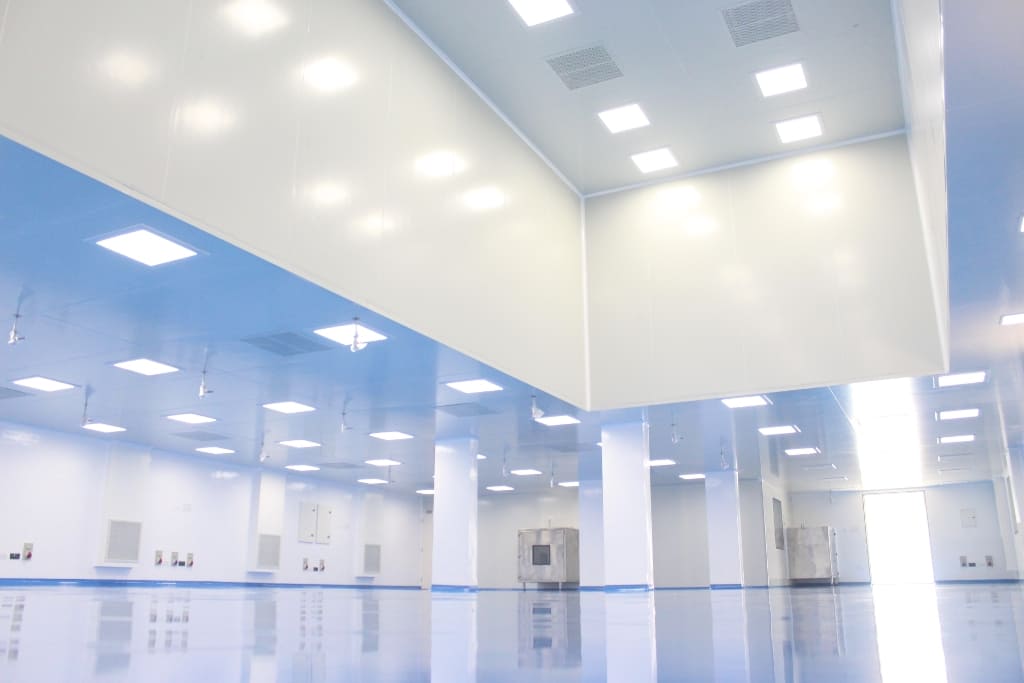
Building a modular cleanroom is an exclusive and complicated process where all future uses and the local climate need to be considered. A clean environment is a fundamental requirement for various applications. Cleanrooms are used to create an environment as clean as possible. Consequently, they lower the risk of contamination. For instance, printed circuit boards! They are manufactured and kept in cleanrooms to prevent short circuits amid the minute connections.
A clean and safe environment is essential in the research and pharma industry. However, the standards of air purity are also defined by the relevant standards based on the business. Seeing distinct requirements amid companies, many providers offer modular cleanroom systems and components accommodating special needs.
6 Questions to Ask Yourself Before Designing a Modular Cleanroom
In light of the many designs and operating guidelines, and regulations, determining the most suitable cleanroom suitable to your specific application would not be an easy job. But, like other capital investments, a checklist of some crucial questions can ensure that your choice is in line with your requirements.
Here are a few questions you should ask yourself while building a cleanroom.
1. What are Modular Cleanroom Systems?
Traditionally, a cleanroom was defined as an enclosed area within a research or manufacturing facility designed to limit air pollution, temperature, humidity, and personal access to satisfy the strict environmental conditions required.
 As a general rule, these rooms were used in various research facilities and industries like biotechnology, pharmaceuticals, microelectronics, food packaging, and more to protect processes and products from contamination.
As a general rule, these rooms were used in various research facilities and industries like biotechnology, pharmaceuticals, microelectronics, food packaging, and more to protect processes and products from contamination.
Controlling potential contaminants is crucial managing to ensure research integrity, product quality, and worker safety. Cleanrooms need to be designed properly.
However, specific guidelines were intended to define the capacity of the room layout to minimize the number of contaminants. While building a cleanroom, make sure it complies with the guidelines.
2, How will I use the modular cleanroom?
The processes conducted in a cleanroom define its functional properties. If we say static sensitivity or chemical processing, this explains some specific types of materials used in building construction.
Maybe you can fulfill your needs with an aesthetically pleasing soft wall room with transparent plastic panels, or perhaps you are desirous of all-steel modular cleanroom systems to ensure ultimate hygiene.
The number of people working in your facility, their accessibility, their approved garbing etiquettes, and other crucial application needs also play a significant role in designing a cleanroom layout.
3. What is the size of attainable space?
The overall space you work in is often a significant aspect of designing a cleanroom. For instance, the ceiling height can impact the air conditioning, ventilation costs, and the comfort of replacing the air filters.
Coupled with, certain activities require gowning before the workers enter the cleanroom, and the shortage of space may need an external or internal gowning room. The area may also require an air shower depending on how hygienic and clean the space is.
Technical considerations are more apparent, particularly for large-scale projects. Structural analysis is crucial to assess what modifications need to be made to your cleanroom design to ensure a smooth and healthy working environment.
A large modular cleanroom, with more than 20ft in length, usually requires internal support pillars that require a skilled contractor and formal permitting. Smaller rooms typically do not need such features. However, they are much easier, quicker, and cost-effective.
4. What rating of cleanliness is required for the applications?
Each cleanroom activity typically involves an individually unique protocol. Nevertheless, there is a standardization process. ISO (International Standards Organization) has established global standards as a benchmark for the levels of cleanliness.
Specifications of ISO defines the microbes quantity present in the air per cubic meter, which is controlled by a specific airflow velocity and air changes every hour.
These standards allow you to determine the amount and the FFUs (fan filter units) located within the cleanroom.
The more rigorous your cleanliness requirements are, the greater the number of filter units and fans, the greater the ongoing operational expense.
Once you have determined the number of FFUs you require, it is crucial to place them equally across the ceiling without clumping them together. Inconsistent airflow can cause laminar airflow to be uneven and can cause unwanted turbulence.
5. What kind of pressure is required for a modular cleanroom?
The most important factor in determining the type of cleanroom pressure will be whether the specimen is protected from the surrounding environment.
If requires isolation by positive pressure, or whether the personnel and the environment surrounding. It should be protected from the harmful sample, which calls for negative pressure isolation.
A cleanroom with positive pressure maintains an even flow of air where the air is forced to flow through filters located in the ceiling, and it also exits vents located a the bottom of the cleanroom walls.
A cleanroom with negative pressure on the counter side eliminates harmful chemicals or powders by exhausting air from the ceiling through the base of the wall.
It is vital to consider airflow and pressure since they affect the physical space and the energy usage in the cleanroom.
There is a chance that you might require to obtain a building permit or regulations. Especially when the room’s design changes the structure of your facility or is at risk of emitting harmful fumes into the surrounding environment.
6. What are other design aspects relevant to the specific applications you working on?
The cleanroom protocols can affect the positioning of the doors, outlets, pass-throughs, and other utility systems. Pass-through doors or swing doors, for instance! It can be prevented while moving various types of equipment.
If you require to move heavy equipment in and out of the cleanroom, it is best to opt for a removable wall. Some applications are best suited with slide or roll-up doors or even large cart pass-through doors.
Besides, certain types of light fixtures may disrupt the uniformity of airflow. Look out for installing tear-drop fluorescent lights or LED strip light fixtures on the ceiling grid amid FFUs to ensure smooth airflow. The overall energy usage of your facility and expenses can benefit from these design alternatives.
Assemble your modular cleanroom system near an existing lab or the testing areas. As it will be equipped with its power system and will only need an electrical connection to the ceiling. Connecting the wiring to the central power sources would not be difficult.
If the cleanroom has equipment that requires a good water source, for example, a hand-washing platform, consider plumbing. Install PVC pipes hung overhead and dropped down to the room location. Think about the plumbing system of the drainage before setting up the room.
Conclusion
After a thorough determination of the key elements that influence how your cleanroom will be used, you will likely encounter more pressing challenges. Industry experts can provide you with a wealth of information about the modular cleanroom design and configurations.
When it comes to high-quality Modular Operation Theatre, Modular Cleanroom Systems, and other HVAC products, SaiSevaService is the company for any type of modular equipment and service engineers to help you with your application-specific installation, issues and queries.



